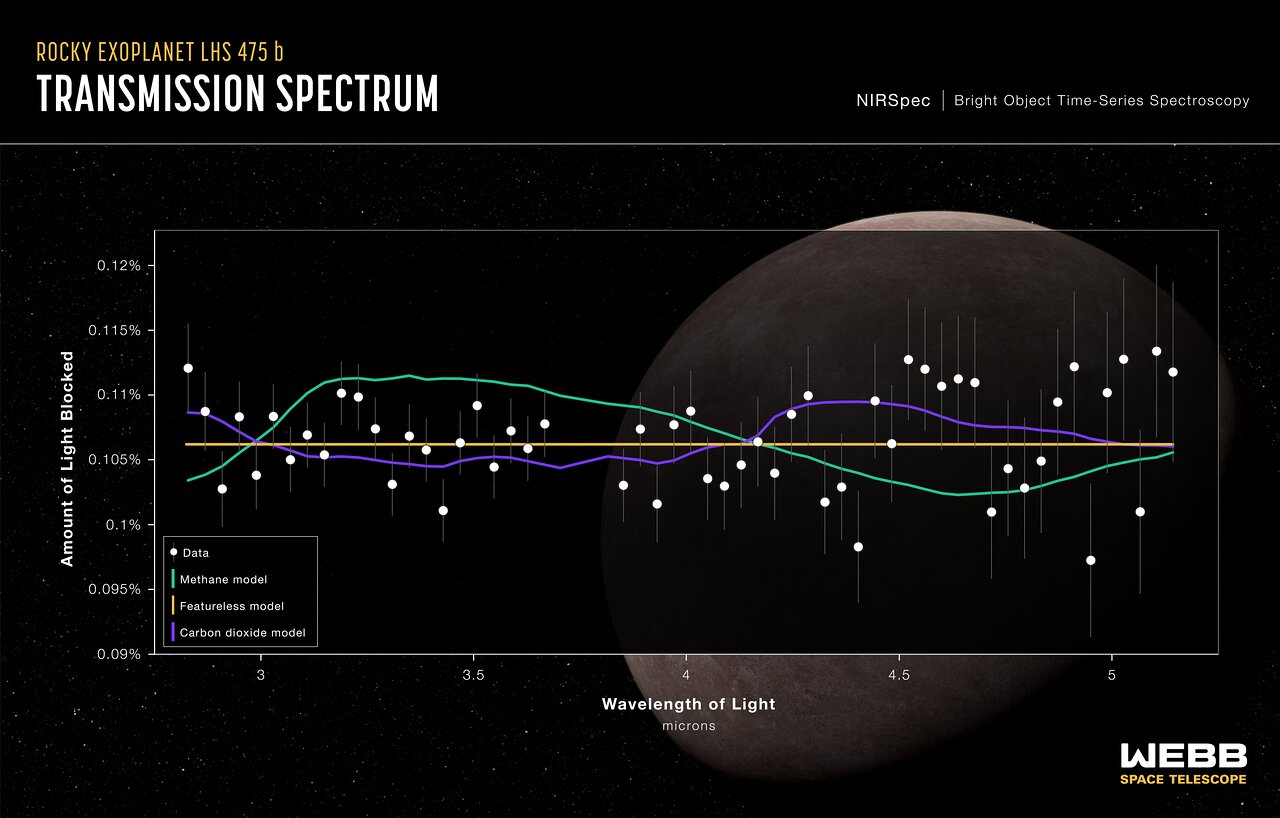Exoplanet LHS 475 b (NIRSpec Transmission Spectrum)
A flat line in a transmission spectrum, like this one, can be exciting — it can tell us a lot about the planet. Researchers used the NASA/ESA/CSA James Webb Space Telescope’s Near-Infrared Spectrograph (NIRSpec) to observe exoplanet LHS 475 b on 31 August 2022. As this spectrum shows, Webb did not observe a detectable quantity of any element or molecule. The data (white dots) are consistent with a featureless spectrum representative of a planet that has no atmosphere (yellow line). The purple line represents a pure carbon dioxide atmosphere and is indistinguishable from a flat line at the current level of precision. The green line represents a pure methane atmosphere, which is not favoured since methane, if present, would be expected to block more starlight at 3.3 microns.
[Image Description: The graphic shows the transmission spectrum of the rocky exoplanet LHS 475 b. The data points are plotted as white circles with grey error bars on a graph of the amount of light blocked in percent on the vertical axis versus wavelength of light in microns on the horizontal axis. A straight green line represents a best-fit model. A curvy red line represents a methane model, and a slightly less curvy purple line represents a carbon dioxide model.]
Credit:NASA, ESA, CSA, L. Hustak (STScI), K. Stevenson, J. Lustig-Yaeger, E. May (Johns Hopkins University Applied Physics Laboratory), G. Fu (Johns Hopkins University), and S. Moran (University of Arizona)
About the Image
| Id: | weic2302d | |
|---|---|---|
| Type: | Artwork | |
| Release date: | 11 January 2023, 19:15 | |
| Related releases: | weic2302 | |
| Size: | 15999 x 10229 px | |


